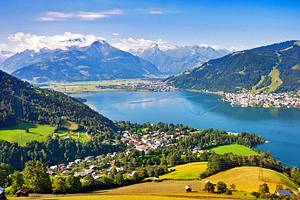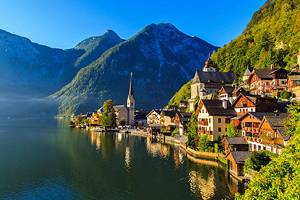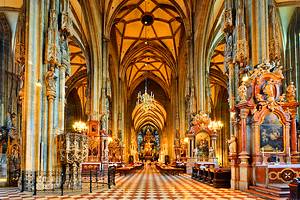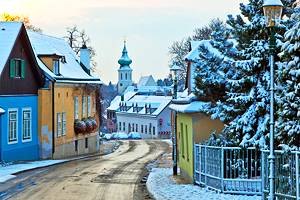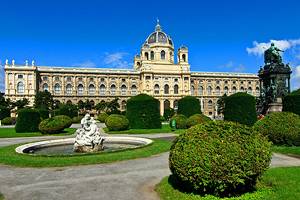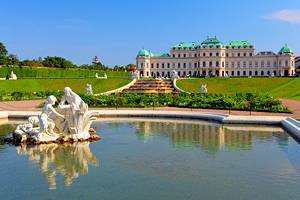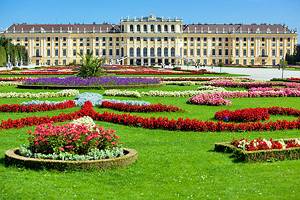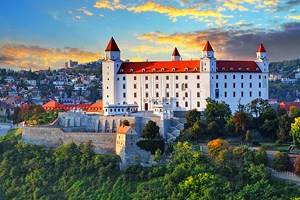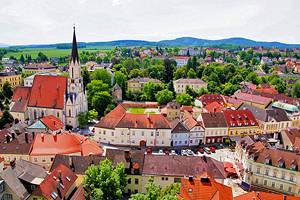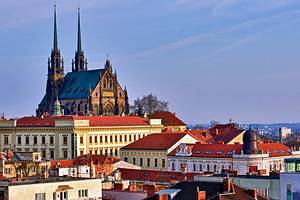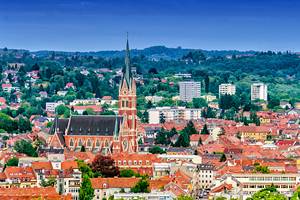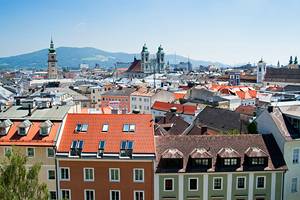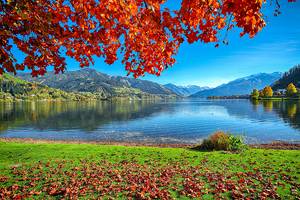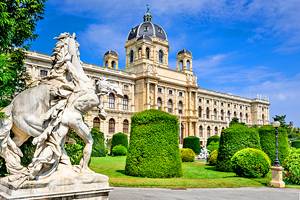Exploring Vienna's Imperial Hofburg Palace: A Visitor's Guide
Vienna's Imperial Palace, the Hofburg, was for centuries the seat of the Habsburgs, rulers of Austria until the end of WWI. A great deal of European history was written here, in particular by Empress Maria and, for a while, the German Emperor. Today, this spectacular palace is used as the official seat of the Austrian Head of State, the Federal President.

The palace complex - one of the largest in the world - is particularly interesting, as its major buildings reflect more than 700 years of architectural history. In fact, nearly every Austrian ruler since 1275 ordered additions or alterations to it, leaving a distinct architectural legacy.
As a result, the Hofburg shows many different architectural styles, from Gothic to Renaissance, Baroque to Rococo, and a smattering of Classicism thrown in for good measure. The oldest part of the complex, the Royal Chapel (Burgkapelle) dates from the 13th century and can still be visited. It's most notable as the home of the famed Vienna Boys' Choir, who can be seen in action during Sunday mass services.

Together with its many squares and gardens, the Hofburg occupies an area of some 59 acres and is, in many ways, a "city-within-a-city" comprising 18 groups of buildings, 19 courtyards, and a staggering 2,600 rooms.
As a result, you can break your visit down into more manageable portions. Visitors in fact are given three choices when visiting this spectacular site: the Imperial Apartments, the Sisi Museum, and the Silver Collection. Each of these can be toured individually or as part of an extended visit.
The area around the Hofburg, along with some of its outlying buildings, also houses a number of other attractions. Some of the best are the Imperial Chapel (Burgkapelle), the Natural History Museum (Naturhistorisches Museum), the Austrian National Library, and the Spanish Riding School.
However you choose to tackle it, to help you plan your visit to this iconic attraction in the Austrian capital, be sure to bookmark and refer often to our visitor's guide to exploring Vienna's Imperial Hofburg Palace.
The Imperial Apartments: Franz Joseph

Of the rooms in the Hofburg accessible to the public, some of the most interesting can be found in the Franz Joseph Apartments. Most of these remarkably maintained rooms in fact remain unaltered since the Emperor's days. Highlights include the Dining Room, famous for its rich décor and Flemish artwork representing the heroic deeds of Hercules, and the Circle Room with its exquisite tapestries.
A fascinating model of the Hofburg and its many buildings can be viewed in the Guard Room, while in the Large Audience Chamber - the waiting room for the Emperor's weekly audiences - the Bohemian crystal candelabrum is worth seeing.
Also of interest here is a list of those in attendance on January 10th, 1910, while in the Study is a bust of Field Marshal Radetzky, one of a select group permitted to appear unannounced before the Emperor. The Field Marshal's ceremonial sword is also on display.
The Imperial Apartments: Empress Elisabeth
Empress Elisabeth's Apartments are no less impressive, and include her sumptuous Living Room. This elegant living space is widely regarded as the prettiest of the Hofburg's many rooms and served both as a living room and bedroom. Another highlight is the Large Salon, home to a fine collection of Louis XIV furniture and a number of Sèvres porcelain vases. It also houses a fine collection of Romantic landscape paintings, and a marble statue of Napoleon's sister.
Also worth a visit are Alexander's Apartments, named after Russia's Tsar Alexander I, who stayed here during the Congress of Vienna (highlights include the busts of Emperor Charles I and his consort, Empress Zita).
You can get an advance look at both Franz Joseph's and Elisabeth's apartments from the Sisi Museum's official website.

The Sisi Museum

Dedicated to Empress Elisabeth (aka Sisi), the Sisi Museum offers a fascinating insight into the aristocracy of the 19th century. In the Hofburg's Stephan Apartments, highlights include more than 300 personal artifacts such as gloves, parasols, notes regarding her strict beauty regime, and the death mask made after her assassination. Also of interest here are the official records made at the time of this tragic event.
Other fascinating artifacts include a copy of the dress she wore when moving to Austria from her native Munich as a 16-year-old in 1854. There's also a copy of her coronation gown, and a replica of part of her imperial railway carriage. Also of note are a traveling medical chest and games case, along with her christening robes.
Address: Hofburg, Michaelerkuppel, 1010, Vienna, Austria
The Hofburg Palace Silver Collection

More than 7,000 items including ceremonial and everyday tableware from the Imperial Court are on display in the Silver Collection, a must-see when visiting the Hofburg. Among the many treasures in this spectacular collection are its fine 18th-century East Asian porcelain, the formal dinner services of Franz Joseph, and a silver traveling service belonging to Empress Elisabeth Christine (wife of Charles VI). Also worth seeing here is the spectacular 10-meter-long Milanese centerpiece made of gilded bronze.
Other highlights include the Meissen service from 1775, the 19th-century Viennese Empire service and, perhaps the most important part of the collection, the Ruby service used for Imperial grand occasions with its settings for 140 guests.
Also, be sure to pop into the Court Kitchen for a look behind the scenes of the Imperial banquets. On display are original copper vessels, pans, and molds, along with old kettles and the warming dishes needed to feed the court's 5,000 members.
Address: Michaelerplatz, 1010 Vienna, Austria
Touring the Hofburg Palace

A number of excellent English language guided tours of the Hofburg Palace are available. The best of them will include the Sisi Museum and the Imperial Apartments. For those wanting to go it alone, English-language audio guides are included with your ticket. Private tours of the Imperial Apartments can also be booked for individuals and groups.
Those looking for a truly unique experience should consider one of the special evening or themed tours. These fun excursions include topics such as everyday imperial life, state banquets, and the life of Empress Sisi.
Tips and Tactics: How to Make the Most of Your Visit to Vienna's Hofburg Palace
- Dining: Café Hofburg serves coffees and light meals in the heart of the palace, and in warmer months offers patio service.
- Off-Season Specials: For those visiting during the quieter months of the year, special admission packages are available that include Viennese coffee and pastries at Café Hofburg, along with special combined admission to the Silver Collection, Sisi Museum, and Imperial Apartments.
- Access: The Sisi Museum and the Imperial Apartments are wheelchair accessible. Discounted tickets are available for those with disabilities along with those providing assistance.
Getting to the Hofburg
- On Foot: The Hofburg lies within easy walking distance of Vienna's city center and its many tourist attractions.
- By Bus: The Hofburg is well served by city bus services (Routes 2A and 3A, alighting at Hofburg).
- By Tram: Vienna's tram services travel to the Hofburg regularly (Routes 1, 2, D, and J, alighting at Burgring).
- By U-Bahn (Subway): The nearest subway station is Herrengasse (Route U3).
- By Train: Vienna is well served by major rail routes from across Europe and Austria. The nearest stations are Westbahnhof and Meidling (connections via U-Bahn are required).
- By Road: As with most major European cities, much of Vienna's city center is designated as pedestrians only. If driving is a must, park on the city's outskirts and use public transit.
- Parking: No on-site public parking is available.
Address
- Hofburg Palace, Michaelerkuppel, 1010 Vienna, Austria
- Official site: www.sisimuseum-hofburg.at/en/
What's Nearby?

The Hofburg complex houses numerous other excellent attractions worth visiting, most of which are run independently and require separate admission. A must-see is the Imperial Chapel (Burgkapelle), constructed in 1449 with later additions in Baroque and Gothic styles. Highlights of a visit include its rich interior, along with an opportunity to see the famous Vienna Boys' Choir and the State Opera Choir singing at Sunday Mass and religious holidays (pre-booking essential).
The Collection of Arms and Armor (Hofjagd- und Rüstkammer) is another Hofburg must-see and includes medieval helmets, royal armor and ceremonial swords, richly ornamented shields, and superb 16th-century Ottoman weapons, while the Collection of Old Musical Instruments (Sammlung alter Musikinstrumente) in the New Palace (Neue Burg) contains unique Renaissance pieces such as antique clavichords, a table piano that belonged to Joseph Haydn, a grand piano presented to Beethoven, and a Viennese table piano at which Schubert composed.
The Hofburg complex also houses the Museum of Ethnology (Weltmuseum Wien) with its collection of more than 150,000 objects, including Benin bronzes dating back to the 15th century. Also worth seeing is the Mexican Collection with the headdress and feather shield of an Aztec priest.
The Imperial Treasury (Kaiserliche Schatzkammer) is also worth visiting and contains 21 rooms of Imperial regalia and relics, including coronation and chivalric insignia, badges of rank, secular and sacred treasures, and ornaments and mementos formerly owned by the Habsburgs.
More Related Articles on PlanetWare.com
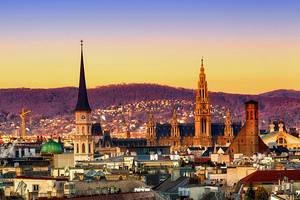
Exploring the Sites: Other must-see attractions to add to your itinerary include Schonbrunn Palace and St. Stephen's Cathedral, but for a complete list see, our guide to the top attractions in Vienna.



